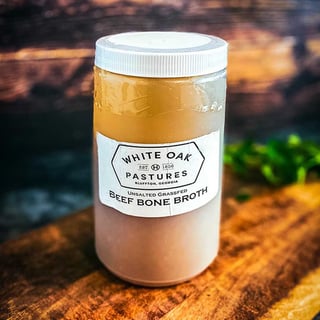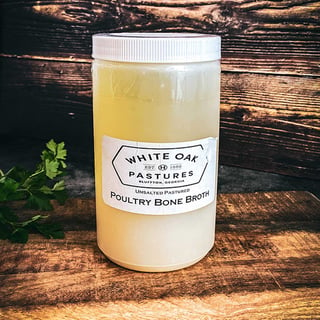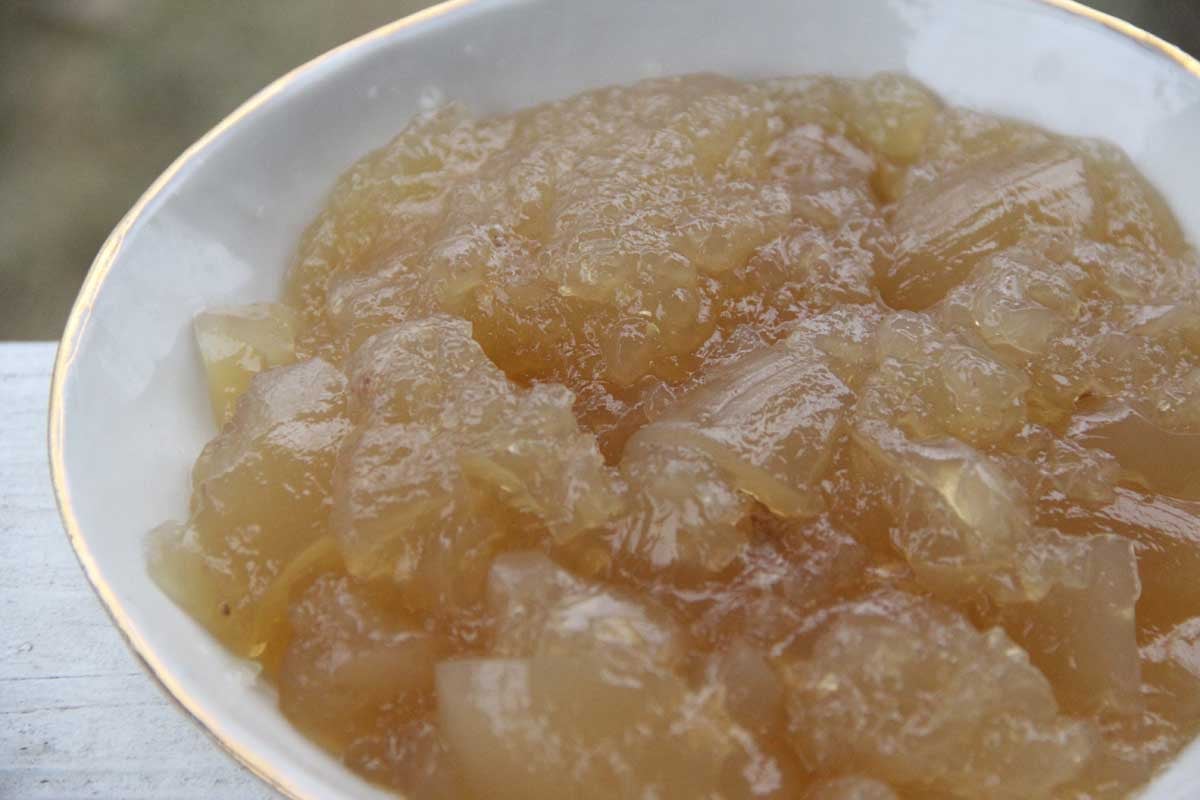
Our guest blogger Sarah Armstrong, along with her sister Ashley, are The Strong Sistas, two girls passionate about regenerative agriculture, sharing the carnivore way of life, & all things health & fitness.
Bone broth has recently resurfaced as a hot commodity - literally - in the health realm, with particular presence in the paleo, keto, & carnivore circles. Despite the boom in popularity, bone broth is nothing new. Bone broth has been a staple item in several traditional cultures for centuries, and for good reason.
Bone broth is nothing short of delicious, and it’s the closest thing we have to a “superfood” or a natural multivitamin; the nutrients contained in bone broth benefit nearly every part of the body. Many of these nutrients, however, are contained in parts of the animal we rarely consume or cannot easily be eaten directly, such as the bones, tendons, and ligaments. Our ancestors made good use of these parts by making broth, allowing the bones to release nutrients (such as collagen, glycine, glutamine, marrow, & an abundance of vitamins and minerals) into the stock.
These healing compounds have led to the all too familiar recommendation to “drink some soup” when we’re sick; the warm, nutritious broth will surely make us feel better. Turns out, this is a great suggestion, however, the ultra-processed canned soups found on shelves at the supermarket are not what this suggestion refers to.
As the famous South American proverb reads, “good broth will resurrect the dead.” Not all broth is created equal. The canned, shelf stable, highly processed broths we’ve become accustomed to are devoid of nutrients and typically full of toxins and preservatives; exactly what our bodies do not need.
However, the outcome of simmering high quality, grass-fed beef bones or pastured poultry bones is a liquid gold containing a wide array of bioavailable vitamins and minerals. We recommend you source the highest quality bones to make your broth, as these bones will contain the highest amount of nutrients with the least amount of toxins.
So… what are these powerful nutrients, you may ask?
Nutrients in Bone Broth
Protein
Bone broth is a great source of protein, stocked full of several essential and non-essential amino acids that help rebuild our tissues. Bone broth that is ‘wiggly jiggly’ when at a cool temperature is particularly high in the protein collagen, which is made up, in large part, by amino acids glycine, proline, & glutamine.
Marrow
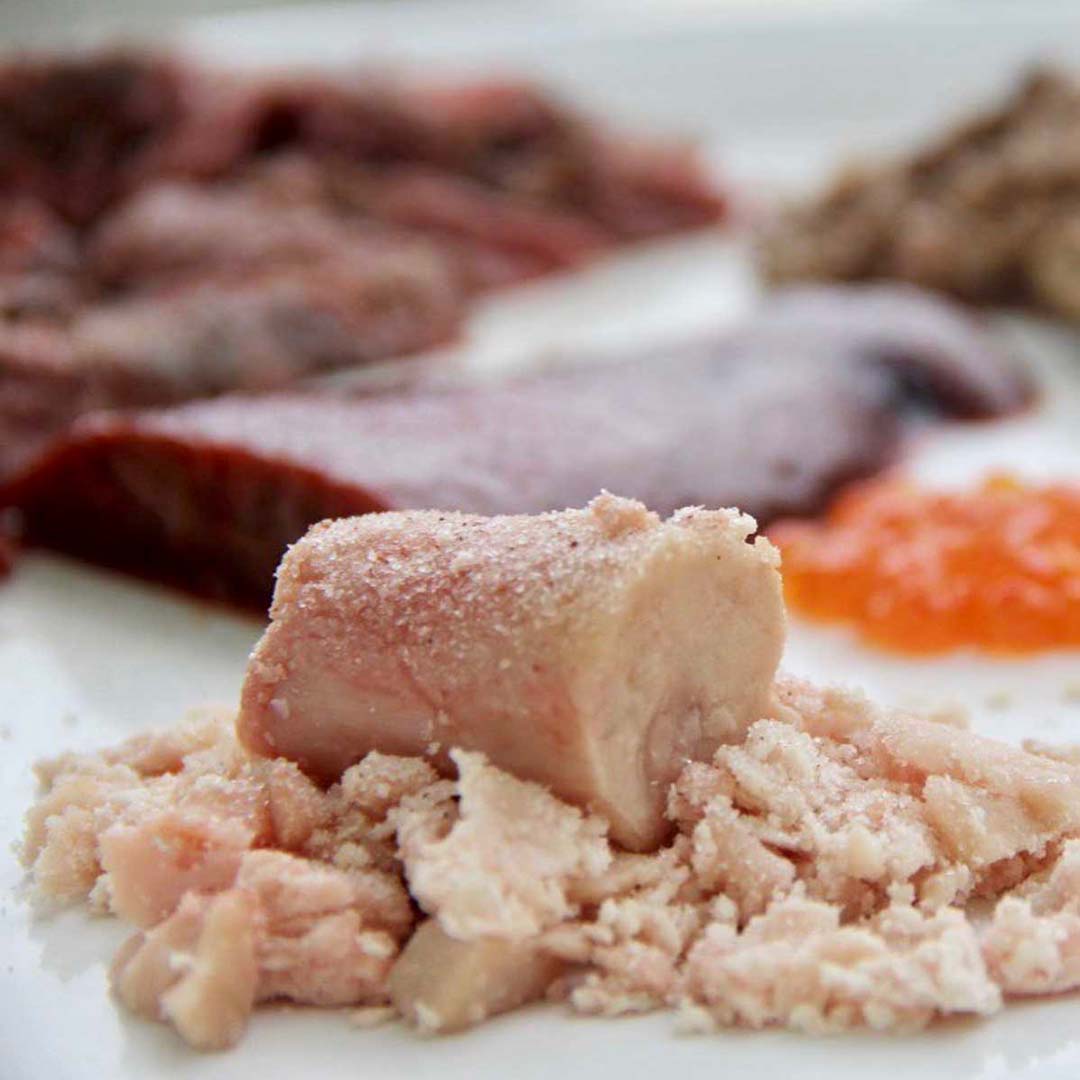
Inside the cavity of the bones is bone marrow, which is an excellent source of raw fat, collagen, & several vitamins and minerals. The marrow is the fat that will separate to the top when you let the broth cool in the fridge. Bone marrow is particularly high in vitamin E, containing 4.7x the amount of vitamin E in muscle meat, & is comparable to 1 cup of whole milk in calcium(1).
Further, bone marrow contains adiponectin(2) and is a rich source of conjugated linoleic acid (CLA). Adiponectin is a hormone that supports insulin sensitivity, breaks down fat & decreases the risk of cardiovascular disease, diabetes & obesity associated cancer. Thus, the marrow adipose tissue serves as an endocrine organ that can influence metabolism, meaning the marrow acts as a chemical messenger that can regulate distant target organs. CLA is a type of fat that decreases inflammation & further enhances immune function(3).
Red bone marrow, in particular, functions as the manufacturing site for new red blood and immune cells(4,5) and many believe that these critical immune support factors are extracted from bone marrow when cooked, such as in the process of making bone broth.
Minerals
In addition, numerous minerals are extracted from the bones when making broth. Once again, the source and corresponding quality of the bones matters. High quality bones from strong, healthy animals will likely output a higher amount of minerals, including(6):
- Calcium
- Copper
- Iron
- Magnesium
- Manganese
- Phosphorus
- Sodium
- Potassium
- Zinc
Tip: Some advocate that adding an acidic medium to broth helps extract more of these minerals from the bones. This is why we add a small amount of apple cider vinegar to our White Oak Pastures broth. While there is calcium in bones, bone broth itself is not a great source of calcium, and 1 cup contains about 8% of the RDA of calcium when an acidic medium is used.
Grassfed Beef Bone Broth
1 Qt. $9.99
Pasture-Raised Poultry Bone Broth
1 Qt. $9.99
Of particular mention is several of these nutrients role(s) in improving gut health and aiding digestion, discussed below.
Bone Broth & Gut Health
Gut health is a good indication of one’s overall health. Chronically poor digestion, bloating, gas, GERD, constipation, and diarrhea are all noticeable symptoms of a deeper problem stemming from the gut, but not all gut issues are as easily detected.
Leaky gut syndrome occurs when the intestinal lining is thinned and weakened, compromising the ability of this barrier to do its job: keep food particles and microbes IN the gut & other bodily fluids out. With a weakened intestinal lining, undigested particles can leak through, increasing inflammation and causing dysfunction all over the body, as our immune system “ignites” to attack the foreign substances that have leaked through. This results in an autoimmune-like response. As autoimmunity, in conjunction with leaky gut syndrome, is on the rise, it’d be wise to take precautionary measures to avoid compromising your gut health, and to take steps to repair any damage already done. There’s good research bone broth can help in both scenarios.
Before we discuss how bone broth can help heal the gut, we must first understand the various nutrients comprised in bone broth that take part in the healing process.
Collagen / Gelatin
You’ve probably heard of collagen by now, but what exactly is it? Collagen is a protein, a make-up of several amino acids that serve different functions in the body. Each protein has a unique make up of amino acids, and when you digest the protein, you’re actually absorbing these tiny amino acids, which your body then uses to form new protein chains.
If your diet lacks a certain amino acid(s) needed to make a protein, your body cannot always compensate for this, which is why some proteins are considered “essential” — aka, you must obtain these amino acids from your diet, as your body cannot produce them on its own.
“Complete proteins” contain all 9 “essential” amino acids. However, just because an amino acid is ‘non-essential’ does not mean we should not include it in our diets, as the ability to *abundantly* produce some of these amino acids is limited to people in great health.
Individuals dealing with skin issues, joint pain, or connective tissue disorders are not abundantly producing these non-essential amino acids. These issues may stem from (several) nutrient deficiencies, with notable mention of non-essential amino acids glycine, proline, and hydroxyproline (made from proline and lysine) - three amino acids that are abundant in collagen protein, an “incomplete” protein. Collagen’s benefits (see image) stem from these amino acids.
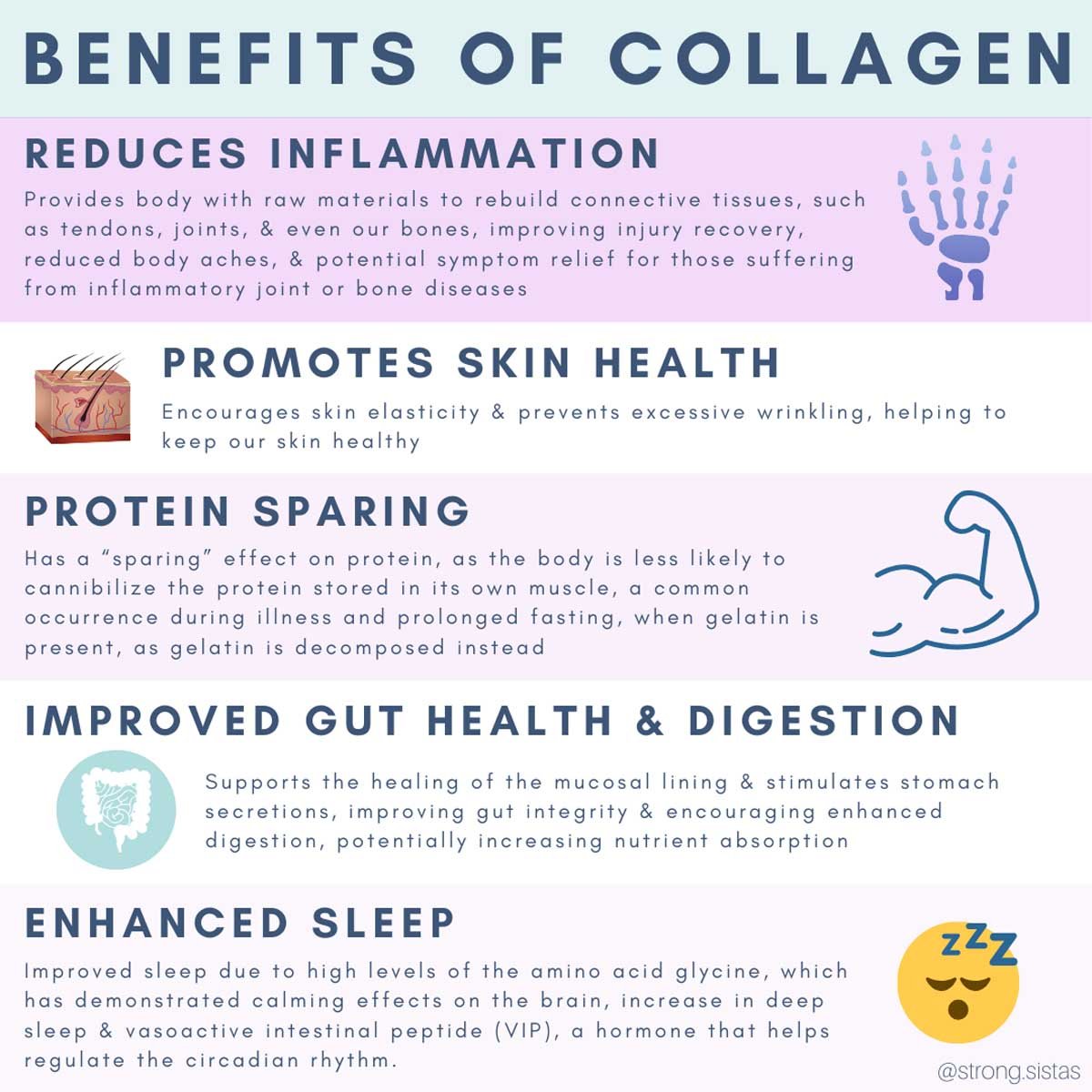
If made properly, bone broth is a wonderful source of collagen, with 1 cup typically containing around 7-10 grams worth of the protein. One of the best ways to test whether your broth is high in collagen is the “wiggle test” — gelatin is the cooked form of collagen, so once cooled, broth that is high in collagen will adopt a “gelatin” consistency, similar to jello, and wiggle when shaken.
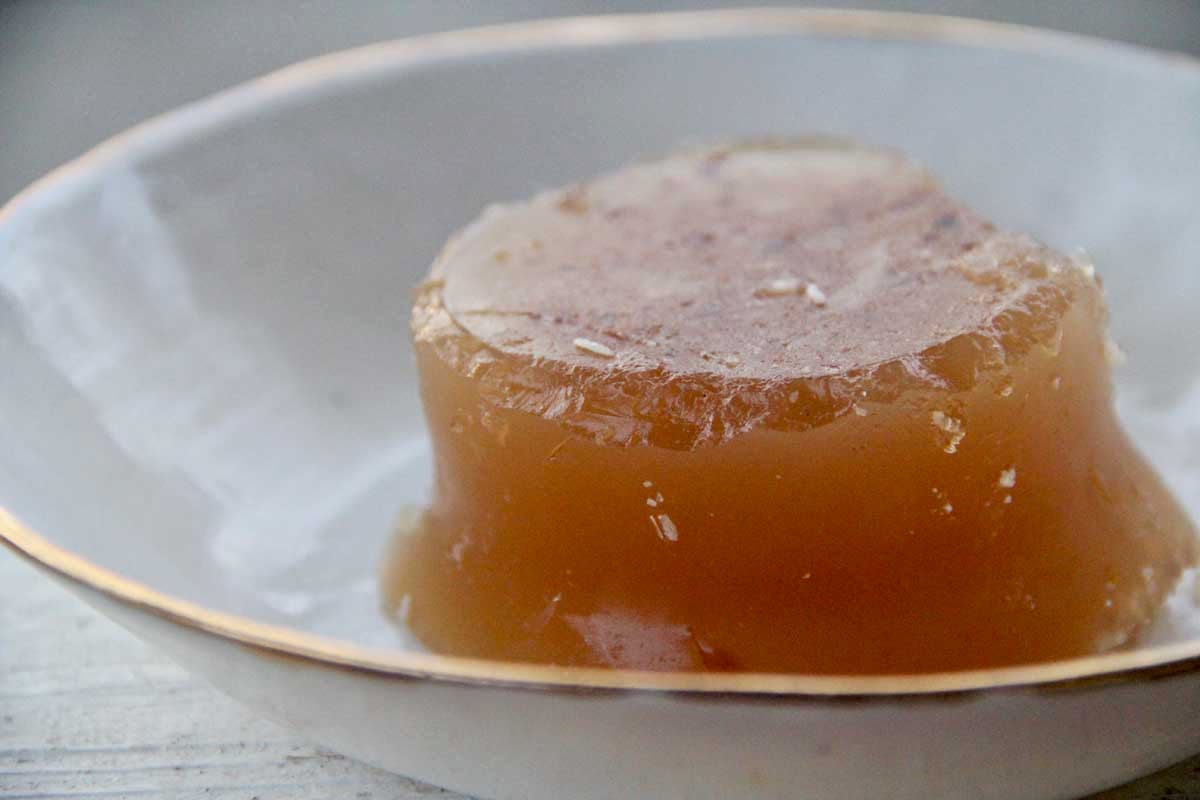
The collagen stems from the connective tissues, skin, tendons, and other gelatin-rich parts of the animal, typically what are considered ‘odd’ and hardly consumed. Think: chicken feet. (Yes, we recommend including chicken feet in your broth, as you’ll discover in the attached recipe. More on this below; don’t knock it till you try it!)
 Grassfed Beef Gelatin
Grassfed Beef Gelatin
1 Qt. 12.99
Glycine
Glycine is an amino acid, but it is not considered “essential” - reason being, our bodies can make glycine, so we technically do not need to consume it. However, it’s been estimated that our ability to produce glycine likely falls short of our daily needs. Our bodies adapt to states of glycine deficiency by reducing our own turnover of collagen (think: accelerated aging, arthritis, poor skin elasticity, etc.)... We don’t want that, so it would be wise to consume some external source(s) of such.
The unique functions of glycine can be seen in the image below.
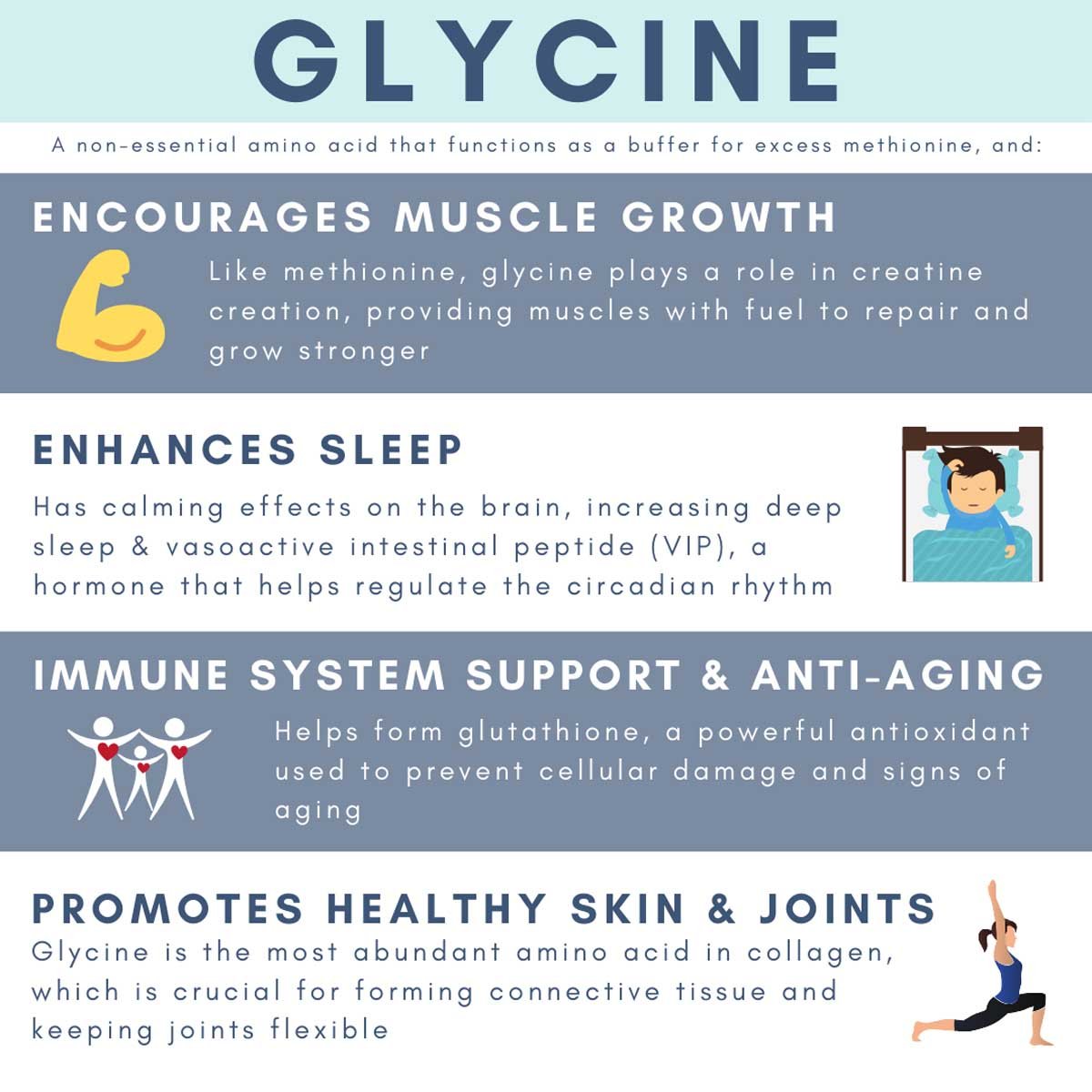
Our ancestors naturally ate a diet high in glycine through regular consumption of bones and connective tissue. Today, most of us do not, which is why bone broth is a crucial addition to our diets to ensure we’re maintaining a healthy balance of several amino acids that play a role in synthesizing proteins; the building blocks our bodies use to regularly rebuild our tissues.
How Bone Broth Can Heal the Gut
As mentioned, bone broth is an incredible source of collagen/gelatin, glycine, and several other fundamental amino acids, making it one of the most beneficial foods to improve gut health and aid digestion. These nutrients help seal any openings in the gut lining, supporting the integrity of the intestinal wall and reducing the amount of toxins that escape the gut and ‘pollute’ the rest of the body. Taking steps to repair the gut can lead to reduced inflammation & improved immune system function. Here are some nutrients that aid these functions:
Gelatin
Bone broth rich in gelatin can help seal the mucosal lining of the GI tract, which helps support intestinal health and integrity(7). As such, individuals with digestive issues or compromised guts will likely benefit from increasing the amount of collagen in their diet, as collagen is composed of several amino acids (such as glycine and glutamine) that help build the gut lining.
Gelatin absorbs and retains water. As such, the presence of gelatin in the gut increases the amount of fluid in the intestines, which supports healthy bowel movements by encouraging movement in the area. Compare this to miraLAX: a laxative that relieves constipation via the same mechanism (increasing the amount of fluid in the intestine), unnaturally. Try drinking broth, instead!
Amino Acids, Glycine & Glutamine
Both glycine and glutamine also help maintain the integrity of the gut. In regards to digestion, glycine stimulates the production of stomach acid, which is a required component of proper digestion and nutrient absorption. In particular, glycine helps synthesize bile acid, which is released during the digestive process in order to aid in the breakdown of fats in the small intestine(8). Improved digestion leads to an increase in nutrient absorption, ultimately leading to enhanced health. So not only does bone broth encourage proper digestion, but it is an excellent source of nutrients itself, providing us with a multitude of health benefits.
Further, glycine has been shown to protect against gastric ulcers(9).
Not all bone broths come with these benefits. Many store bought broths are simply not of the same quality as those you can make at home or find in the White Oak Pastures farm store. View the image below for some other considerations regarding bone broth.
Here is the link if you’re interested in purchasing some of White Oak Pasture’s nutritious bone broth. Otherwise, here’s some staple ingredients to include in your next bone broth batch that will lead to ultimate “wiggle jiggle” (more collagen!) & an increased amount of nutrients.
Staple Bone Broth Ingredients
Stewing Hens
Several traditional methods of making bone broth includes using older hens, like stewing hens (aka, postmenopausal egg layers). These hens spend more time on pasture than meat birds, developing stronger bones with higher levels of vitamins and minerals, namely calcium, boron, and phosphorus. When simmered, these nutrients are released into the broth.
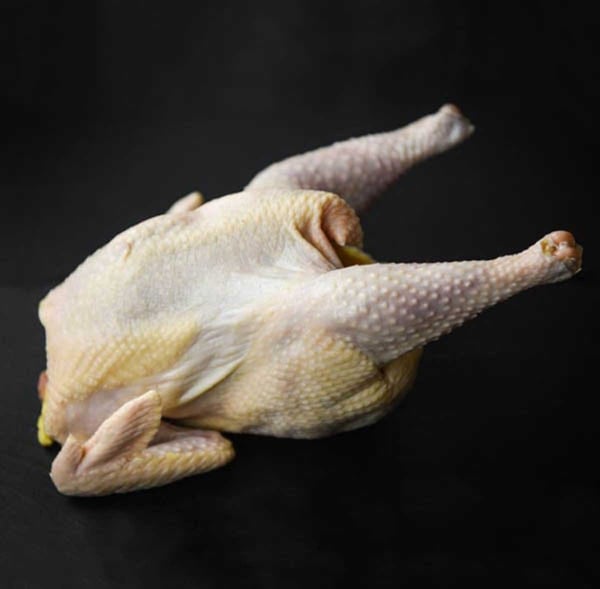
Chicken Heads
Chicken heads contain the brain and eyeballs, which also secrete a unique bunch of nutrients into the broth, and absolutely enhance the flavor, sans any seasoning. The heads also contain a lot of collagen to improve the ‘wiggle jiggle’ of the broth.
Chicken Feet
As mentioned, chicken feet (and other carcass parts) are a staple ingredient in high quality, collagen filled broth. The skin is an excellent source of proline and glycine, two amino acids we discussed that make up the protein collagen, which transforms into gelatin once cooked. So if you want “wiggly jiggly” bone broth, it would be wise to include chicken feet in the cooking process.
Once the chicken feet have been softened and pulled from the broth, don’t throw them out! Chicken feet are a wonderful, crunchy snack when roasted. Try roasting the softened chicken feet in the oven, as described here.

Incorporating Bone Broth into Your Diet
As we’ve uncovered, there’s a lot to appreciate about bone broth, and it makes sense why this traditional food has passed the test of time. If you’ve lost touch with our ancestral ways but want to start including this nutritious broth into your regular routine, there's no reason to be intimidated — it’s now easy to get your hands on quality ingredients to make your own.
Check the premade broths we have available in store, including Grassfed Beef Bone Broth and Pastured Poultry Bone Broth, or try making your own using a variety of our highest quality animal bones following our extra wiggly-ijggly recipe:

Ashley & Sarah Armstrong are The Strong Sistas, two girls passionate about regenerative agriculture, sharing the carnivore way of life, & all things health & fitness.
- See their favorite products from White Oak Pastures
- Visit their website to learn more about their lifestyle and subscribe to their newsletter
- Follow along on Instagram @strong.sistas
References
- https://www.ncbi.nlm.nih.gov/pmc/articles/PMC3417664/pdf/IJCH-71-17997.pdf
- https://www.ncbi.nlm.nih.gov/pmc/articles/PMC5014002/pdf/kadi-05-03-1149269.pdf
- https://www.ncbi.nlm.nih.gov/pmc/articles/PMC3103755/
- https://www.jstor.org/stable/20421458?seq=1#page_scan_tab_contents
- https://www.ncbi.nlm.nih.gov/pubmed/11960292
- https://www.ncbi.nlm.nih.gov/pubmed/15982542
- https://www.ncbi.nlm.nih.gov/pmc/articles/PMC3358810/
- http://www.biochemj.org/content/174/2/621
- https://europepmc.org/article/med/9344231

